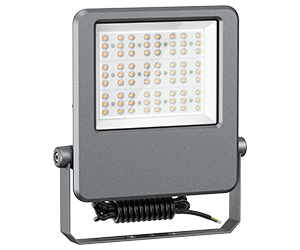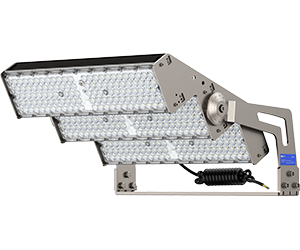Get Samples
If you are looking for industry and outdoor Lighting solutions,
look no further than Seeking LED-Lighting.
July 27, 2024
Billboard lighting is a crucial aspect of outdoor advertising, ensuring visibility and impact both day and night. Here, we explore various solutions, considerations, and technologies for effective billboard illumination.
Types of Billboard Lighting
1. Traditional Billboards:
• External Lighting: Uses floodlights or spotlights to illuminate the billboard from the outside. Commonly mounted at the top or bottom of the billboard structure.
• Materials: Typically made from paper or vinyl sheeting, requiring external light sources for visibility at night.
2. Digital Billboards:
• Self-Illuminating: Equipped with internal LED lights that adjust brightness according to ambient light conditions. These are more versatile but can cause glare if not properly managed.
Key Considerations for Billboard Illumination
Illumination Requirements
• Brightness Levels: Recommended illuminance levels range from 250 to 1000 lux, depending on the ambient lighting conditions. For instance, billboards in dark areas may need up to 1000 lux, while those in well-lit urban areas might require only 250 lux.
. Uniformity: The ratio of maximum to minimum brightness should be 4.0 or less to ensure even lighting without dark spots.
Environmental Impact
• Light Pollution: Excessive brightness can lead to light pollution, affecting nearby residents and wildlife. Proper design can minimize glare and light trespass.
• Energy Efficiency: Using LED lights instead of traditional metal halide lights can significantly reduce energy consumption and environmental impact.
Technological Solutions
LED Lighting
• Energy Efficiency: LEDs consume less power and have a longer lifespan compared to traditional lighting solutions. They also offer better control over brightness and color temperature.
• Durability: High-quality LED lights are weather-resistant and can withstand extreme conditions, making them ideal for outdoor use.
Advanced Features
• Anti-Glare Measures: Ensuring that the lights do not cause discomfort to drivers and pedestrians is crucial. Anti-glare technologies help in achieving the right balance.
• Heat Dissipation: Proper ventilation systems in LED lights prevent overheating, thus extending the lifespan of the lights and maintaining safety.
Installation and Maintenance
• Mounting Options: Flexible mounting options allow for easy installation at various positions on the billboard, whether at the top, bottom, or sides.
• Maintenance: LED lights require minimal maintenance due to their long lifespan and robust design, reducing operational costs over time.
Regulatory Considerations
• Local Standards: Compliance with local lighting regulations is essential. For instance, the Illuminating Engineering Society (IES) recommends illuminance levels between 20 to 100 footcandles for billboards.
• Residential Impact: Billboards near residential areas should have controlled lighting to avoid disturbing residents, with specific limits on vertical illuminance at windows before and after certain hours.
Conclusion
Effective billboard lighting involves a balance of brightness, uniformity, environmental considerations, and technological advancements. By choosing the right lighting solutions and adhering to best practices, advertisers can ensure their billboards are both impactful and sustainable.

If you are looking for industry and outdoor Lighting solutions,
look no further than Seeking LED-Lighting.
Address:5F, Building 5, Guole Science and Technology Park, Lirong Road, Dalang Street, Longhua, Shenzhen, China
Phone:+86(755)29846615
Sales:sales01@seekingled.com
Support:chen-rd@seekingled.com
Feedback: dawei@seekingled.com
Suppliers:buy@seekingled.com
Copyright © 2025 Seeking LED-Lighting Limited. All Rights Reserved


